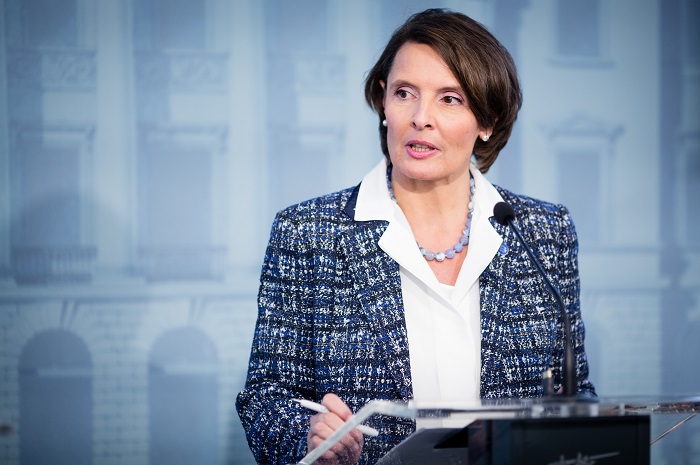Working group submits report to transport minister
Utilisation of transport ecosystem stressed
Published : 27 Apr 2017, 00:16
Updated : 27 Apr 2017, 11:43
Finland has the opportunity to become a pioneer in swift adoption and application of new, globally created technology solutions, according to a report of the working group on transport and communications architecture submitted to Transport and Communications Minister Anne Berner on Wednesday.
The working group in its report also said that success will require effective utilisation of the combined transport and communications ecosystem, said an official press release.
Chaired by Esko Aho, a former prime minister, the working group is comprised of Lauri Lyly, a former president and chairman of the Central Organisation of Finnish Trade Unions (SAK), and Inka Mero, a start-up investor and the founder and chairwoman of Pivot5 Oy.
“The current system does not need to be adjusted because it functions poorly, but rather because the present model cannot respond to the coming challenges that will impact transport and communications. In addition to current reforms, the vision we have presented gives the means for determining how and in which direction Finland’s transport and communications operating environment should be developed. The experiences gained from the telecommunications sector during the mobile technology revolution are a good example of this,” Aho said while submitting the report.
“Work on this vision highlights the growing significance of data will have as a competitive asset in the future. I hope that Finnish companies grab hold of this opportunity to develop new services and business prospects. Work on the vision will also provide ideas and tools for the parliamentary working group tasked with considering the funding of the transport network,” Berner said on the occasion.
The report describes the trends that will influence the transport and communications sector, as well as the components that make up a functioning transport and communications architecture. In addition to data, the working group feels that accessibility, open interfaces, pricing, taxation as well as regulation will be the key factors. Finland’s strengths, which will allow the now presented vision to be attainable, include a high level of education and, in particular, critical ICT expertise as well as fluid cooperation between the private and public sectors.
The report said in order to develop a cohesive transport and communications infrastructure in line with the vision to be a possibility, sufficient funding must be ensured. Infrastructure is expected to develop primarily on the basis of demand, in which case society’s task will be to guarantee that the needs of those areas that fall outside, such as sparsely populated areas, are met. The funding system for future infrastructure would comprise more and more public and private funding.
The report also presented future scenarios for 2030 and 2050 in which Finland would succeed in utilising technological solutions in the manner described in the vision. In 2030, the Northeast Passage cable would make Finland a hub for telecommunications between Europe and Asia. Helsinki would be in the same work commuting area as Saint Petersburg, Tallinn and Stockholm. Fast telecommunications connections would make it possible to utilise services, life and work outside of residential centres.
In addition to data, the working group wanted to highlight key factors, which will require attention during the creation of a strategy for achieving the vision. Transport and communications networks must be developed together, in synch. Additionally, transport and communications services must be produced on market terms, utilising data and open interfaces.
In September 2016, the Ministry of Transport and Communications appointed the rapporteurs to produce a vision on how a favourable environment can be created for Finland’s wellbeing, competitiveness and national economy in 2030 and 2050 via a bold development of transport and communications system.


